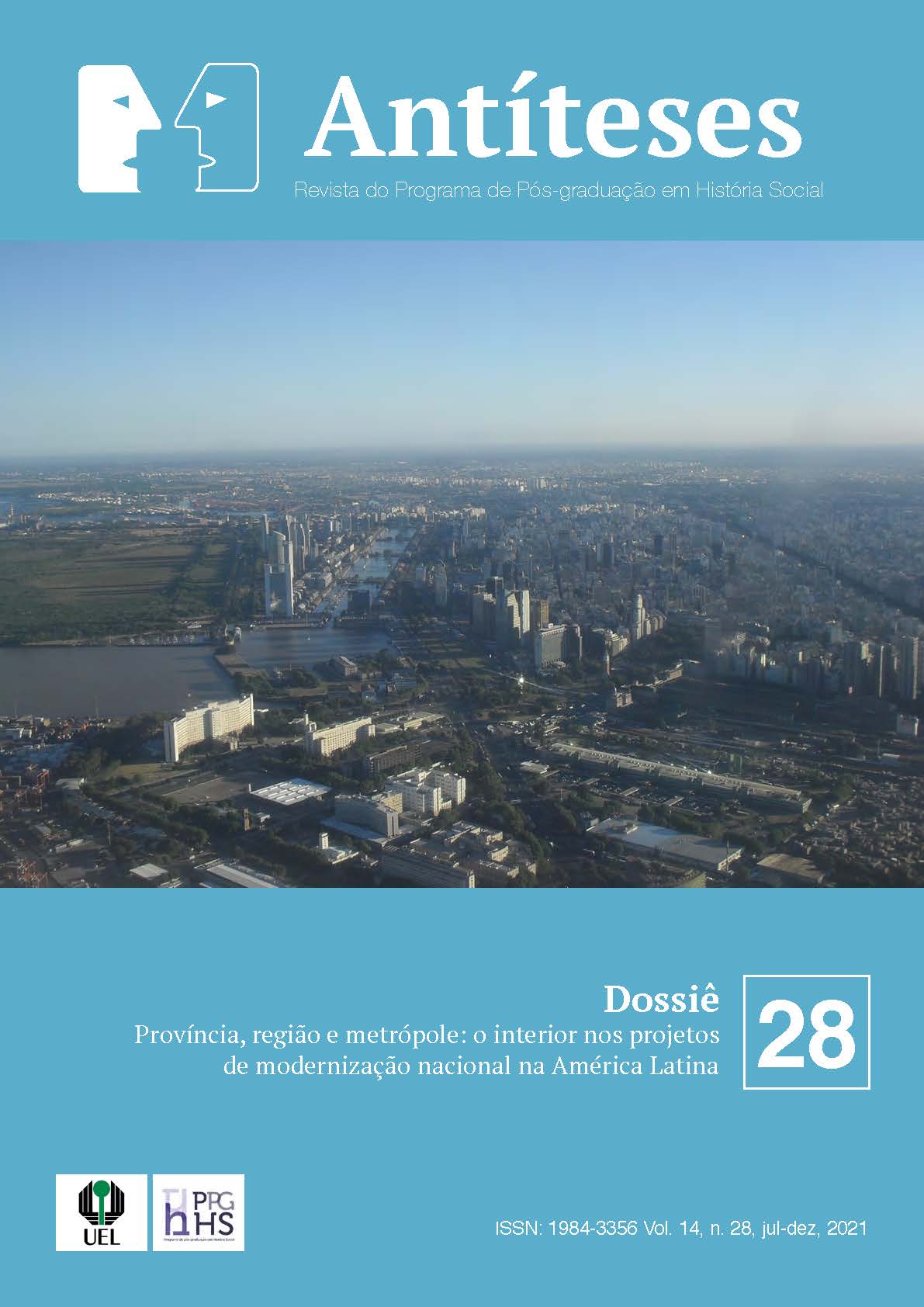Pre-modern mimesis underlying the Descriptive Memorial of the Brasilia Project
DOI:
https://doi.org/10.5433/1984-3356.2021v14n28p601Keywords:
Brasília, Urban form, Urban paradigms, Urban symbology, MimesisAbstract
Through this article, we intend to discuss the Brasilia Pilot Plan project, elaborated by Lúcio Costa, in order to understand it beyond modern urban paradigms, as a palimpsest of older urban forms, which persevered under the silhouette of these most recent references. In this regard, we are not particularly interested in whether the adoption of certain forms was conscious and intentional from the initial guidelines or whether they intuitively arose throughout the design process (since it is not possible to evaluate the deliberations of Lúcio Costa's psychological intimacy), but only if they share space organizations already experimented with in traditional models of cities. The simple fact that certain urban forms survive in the face of modernity imperatives seems to be a symptom of their latent vigor. Analyzing Brasília from this perspective, therefore, restores the importance of mimesis as a force that connects citizens and history to urban design. In this sense, we point to issues of quite different scales, ranging from the mystique of the site of the capital, through the general lines that determined the silhouette of the set (two orthogonally crossed axes), to specific issues regarding the fortified conformation of the ministerial esplanade, and even of the dimensioning of the residential sectors. Although these notes are presented as a hypothesis, they appear in the light of a literature review and comparative methodology, enabling a desired expansion of the discussion.
Downloads
References
BERTRAN, Paulo. História da terra e do homem no Planalto Central: eco-história do Distrito Federal. Brasília: Editora UnB, 2011.
BICCA, Paulo. Brasília: mitos e realidades. In: PAVIANI, Aldo (ed.). Brasília, ideologia e realidade: espaço urbano em questão. São Paulo: Projeto Editores, 1985. p. 101-113.
BRAGA, Aline Moraes Costa. (Im)possíveis Brasílias: os projetos apresentados no concurso do plano piloto da nova capital federal. São Paulo: Alameda, 2011.
BRAGA, Milton. O concurso de Brasília: sete projetos para uma capital. São Paulo: Cosac & Naify, 2010.
BRASÍLIA. Rio de Janeiro, n. 30, jun. 1959.
CARPINTERO, Antônio Carlos Cabral. Brasília: prática e teoria urbanística no Brasil, 1956-1998. 1998. Tese (Doutorado) - Faculdade de Arquitetura e Urbanismo da Universidade de São Paulo, São Paulo, 1998.
CNRH. Resolução n. 32, de 15 de outubro de 2003. Anexo I. Conselho Nacional de Recursos Hídricos. Brasília, DF: Ministério do Meio Ambiente, 2003.
COSTA, Lúcio. Registro de uma vivência. São Paulo: Editora 34, 2018.
COSTA, Maria de Fátima. De Xarayes ao Pantanal: a cartografia de um mito geográfico. Revista do Instituto de Estudos Brasileiros, São Paulo, n. 45, p. 21-36, set. 2007.
CRULS, Luis. Relatório da Comissão Exploradora ao Planalto Central do Brasil. São Paulo: Companhia Editora Nacional, 1947.
DANTO, Arthur. A transfiguração do lugar-comum. São Paulo: Cosac & Naify, 2005.
FICHER, Sylvia; PALAZZO, Pedro Paulo. Os paradigmas urbanísticos de Brasília. Cadernos PPG-AU, Salvador, ano 3, p. 49-71, 2005. Edição especial.
GOROVITZ, Matheus. Brasília: uma questão de escala. São Paulo: Projeto Editores, 1985.
GOROVITZ, Matheus. A invenção da Superquadra: sobre o conceito de área de vizinhança em Brasília. In: FERREIRA, Marcílio Mendes; GOROVITZ, Matheus. A invenção da Superquadra. Brasília: Iphan, 2010. p. 15-39.
HOLANDA, Frederico de. O espaço de exceção. Brasília: FRBH, 2018.
HOLSTON, James. O espírito de Brasília: modernidade como experimento e risco. In: NOBRE, Ana Luiza; KAMITA, João Masao; LEONÍDIO, Otávio; CONDURU, Roberto (org.). Lúcio Costa: um modo de ser moderno. São Paulo: Cosac & Naify, 2004, p. 159-177.
LE CORBUSIER. Por uma arquitetura. São Paulo: Perspectiva, 2018.
MERCATOR, Gerhard. America meridionalis. Amsterdam [Países Baixos], [1606]. 1 mapa, col., 35,8 x49,5cm em f. 48,5 x57,2. Disponível em: http://objdigital.bn.br/objdigital2/acervo_digital/div_cartografia/cart354236/cart354236.pdf. Acesso em: 13 fev. 2020.
PANERAI, Philippe. Análise urbana. Brasília: Editora UnB, 2006.
ROSSATO, Bruno Affonso Rego. As temporalidades das representações cartográficas. 2006. Dissertação (Mestrado) - Instituto Militar de Engenharia, Rio de Janeiro, 2006.
RYKWERT, Joseph. A ideia de cidade: a antropologia da forma urbana em Roma, Itália e no mundo antigo. São Paulo: Perspectiva, 2006.
SMITH, William. A Smaller History of Greece: from earliest times to the Roman Conquest. Londres: Walton and Maberly, 1860.
TAVARES, Jeferson. Projetos para Brasília: 1927-1957. Brasília: IPHAN, 2014.
VALÉRY, Paul. Eupalinos ou o arquiteto. São Paulo: Editora 34, 2006.
VIDAL, Laurent. De Nova Lisboa a Brasília: a invenção de uma capital (séculos XIX-XX). Brasília: Editora UnB, 2009.
Downloads
Published
How to Cite
Issue
Section
License
Copyright (c) 2021 Antíteses

This work is licensed under a Creative Commons Attribution 4.0 International License.
The journal reserves the copyright on the contributions published, without material compensation for the author, and may make them available online in Open Access mode, through its own system or other databases; you can also make normative, orthographic and grammatical changes in the originals, in order to maintain the cultured standard of the language, with the final consent of the authors. The opinions expressed by the authors are their sole responsibility.










